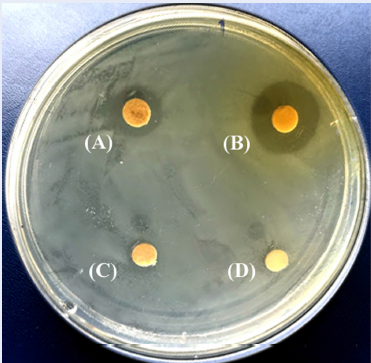Antioxidant and anti-Helicobacter pylori activities of Hericium erinaceus mycelium and culture filtrate
DOI:
https://doi.org/10.15419/bmrat.v8i3.665Keywords:
Antibacterial activity, Antioxidant, Culture filtrate, Helicobacter pylori, Hericium erinaceus, MyceliumAbstract
Introduction: Hericium erinaceus is known as a medicinal edible mushroom owing to its antimicrobial, antioxidant, anti-tumor and immunomodulatory effects. Helicobacter pylori infection is one of the major health concerns worldwide due to its high rate in global populations, frequent recurrence, and rapid emergence of drug-resistant strains. The present study aims to investigate antioxidant anti-H. pylori and urease inhibitory activities of solvent fractions from H. erinaceus mycelium and culture filtrate.
Methods: H. erinaceus mycelium was purely cultured in a liquid medium. A polysaccharide fraction was obtained from the culture filtrate by precipitation with ethanol. The mycelium and culture filtrate were extracted by liquid extraction to obtain solvent-soluble fractions. The antibacterial effects of these fractions were determined using paper disc diffusion and broth microdilution assays. Urease inhibition was determined using the salicylate-hypochlorite method. The antioxidant activity of H. erinaceus was evaluated via 2,2,1-diphenyl-1-picrylhydrazyl (DPPH) radical scavenging activity.
Results: The ethyl-acetate (EtOAc) fractions derived from H. erinaceus culture filtrate (fEtOAc Fr.) and mycelium (mEtOAc Fr.) showed the strongest anti-H. pylori activity with MIC (MBC) of 1.25 – 1.5 (5.0 – 7.5) mg/mL and potential urease inhibitory activity with IC50 of 0.34 – 0.35 mg/mL. In addition, fEtOAc Fr. exhibited the greatest antioxidant activity (IC50, 11.83 mg/mL), which was slightly stronger than that of mEtOAc Fr. (IC50, 14.75 mg/mL). Moreover, our study also found that the water fractions from the culture filtrate (fWater Fr.) and the mycelium (mWater Fr.) displayed considerable inhibitory activities against bacterial urease (IC50, 1.26 – 1.40 mg/mL), although they had low or no anti-H. pylori activities and low antioxidant properties.
Conclusion: The present study revealed that the EtOAC fractions derived from the H. erinaceus mycelium and culture filtrate potentially have anti-H. pylori, anti-urease and antioxidant activities. These results suggest that H. erinaceus mycelium and culture filtrate could be utilized to develop functional foods and nutraceuticals to prevent H. pylori infection. More research is needed to prove the safety of the H. erinaceus mycelium and culture filtrate fractions and their in vivo efficacy in the treatment of H. pylori infection.

Downloads
Published
Issue
Section
License
Copyright The Author(s) 2017. This article is published with open access by BioMedPress. This article is distributed under the terms of the Creative Commons Attribution License (CC-BY 4.0) which permits any use, distribution, and reproduction in any medium, provided the original author(s) and the source are credited.
